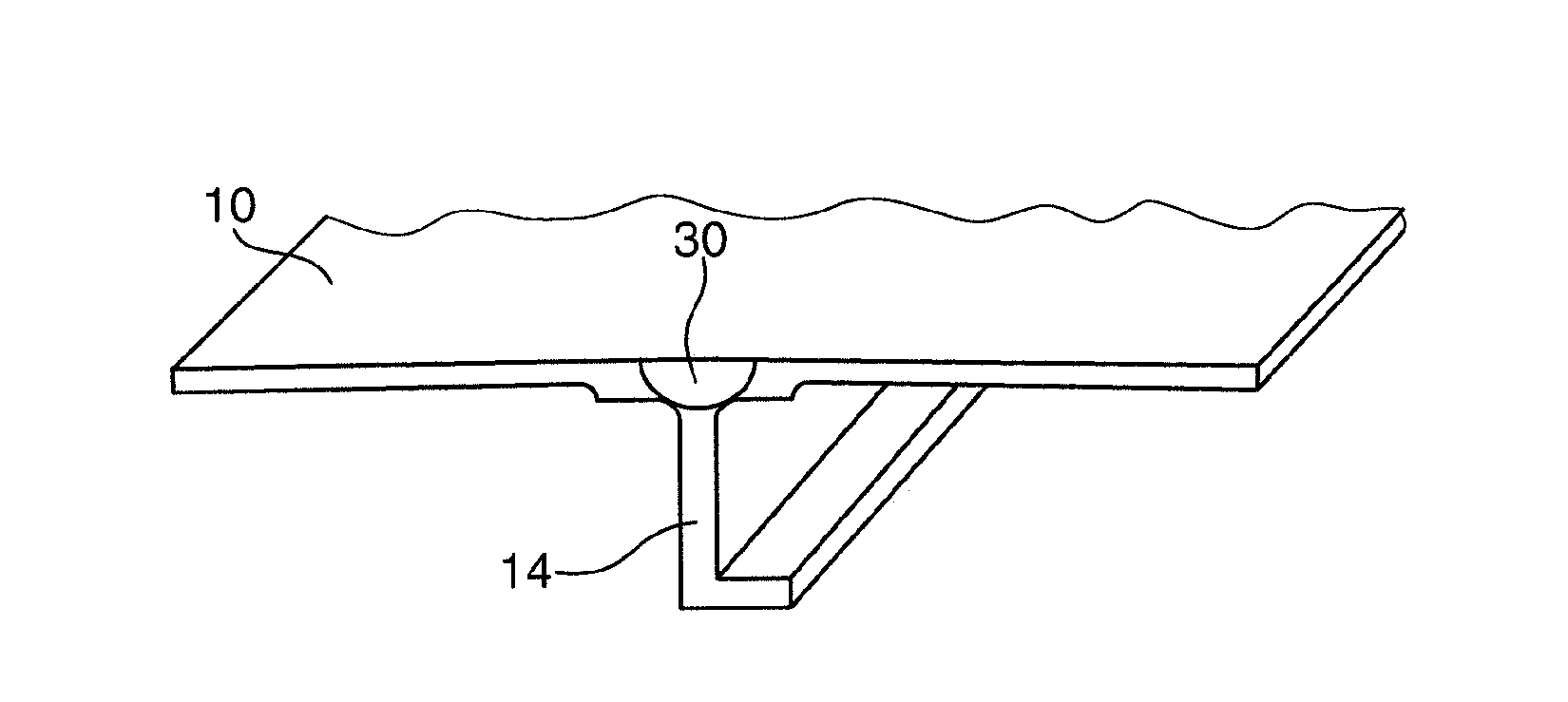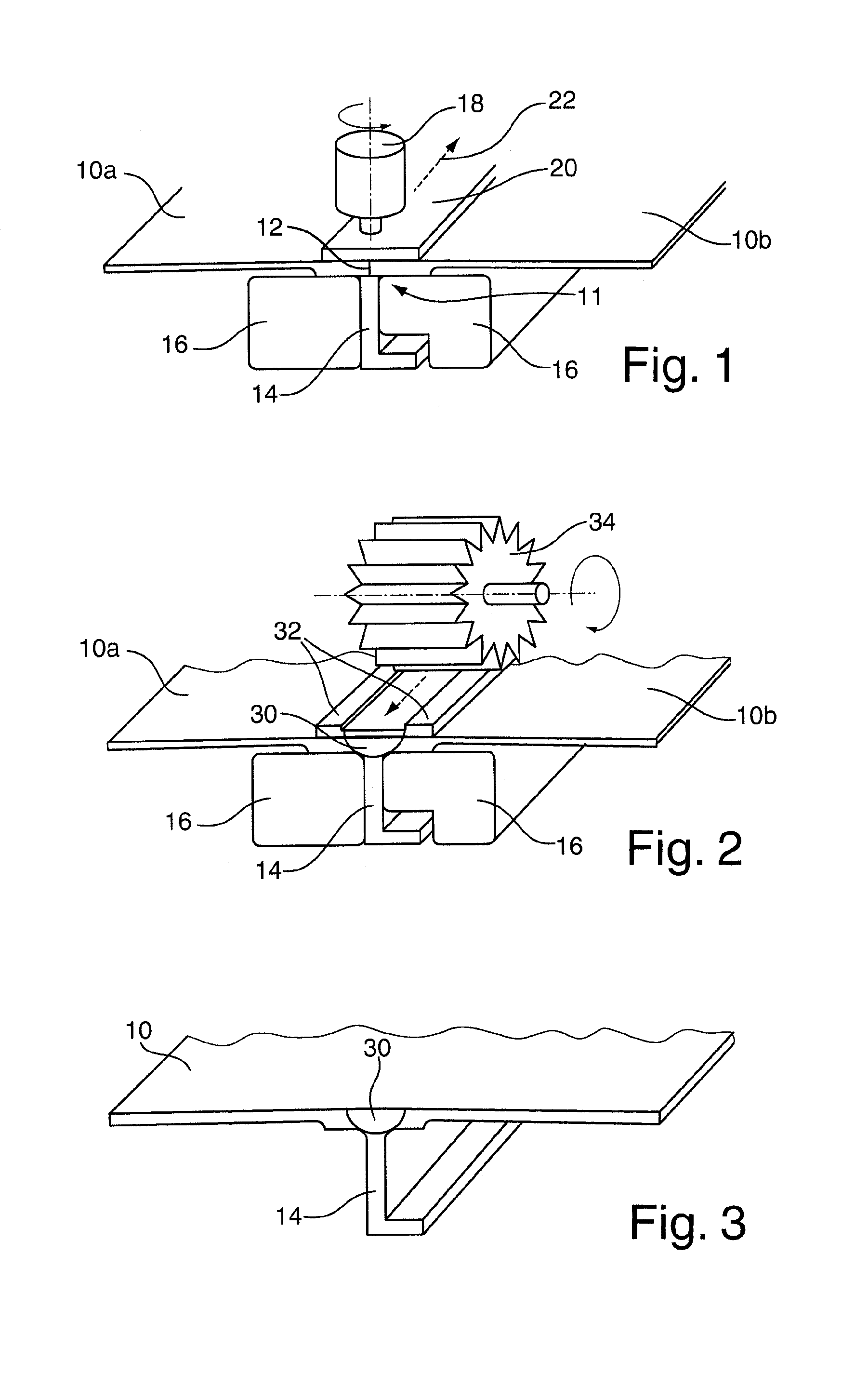Process for connecting two aircraft fuselage segments by means of friction twist welding
a technology of fuselage and friction twist welding, which is applied in the direction of manufacturing tools, transportation and packaging, other domestic articles, etc., can solve the problems of unsatisfactory flow phenomena, high cost, and high cost of components, and achieve the effect of widening the gap width
- Summary
- Abstract
- Description
- Claims
- Application Information
AI Technical Summary
Benefits of technology
Problems solved by technology
Method used
Image
Examples
Embodiment Construction
[0020]In FIG. 1, two aircraft fuselage segments 10a, 10b are shown in a schematic perspective view, which aircraft fuselage segments comprise two joint regions 11 to be interconnected and meet via these joint regions except for a remaining gap 12.
[0021]A reinforcing profile 14, for example a stringer, is arranged on one side of this gap 12, the connection side of said reinforcing profile lying directly against the region of the gap 12 between the two aircraft fuselage segments 10a, 10b. Two support members 16 are further provided on each side of the reinforcing profile 14 and serve as a thrust bearing for a tool 18 and also guide and fix the reinforcing profile 14 during the welding process.
[0022]Opposite the reinforcing profile 14, the gap 12 is covered by a cover plate 20 which is arranged centrally above the gap 12. In order to carry out the friction twist welding process, the tool 18 rotates (with a rotational speed of approximately 500-2000 1 / min) and is pressed with considerab...
PUM
| Property | Measurement | Unit |
|---|---|---|
| thickness | aaaaa | aaaaa |
| thick | aaaaa | aaaaa |
| depth | aaaaa | aaaaa |
Abstract
Description
Claims
Application Information
 Login to View More
Login to View More - R&D
- Intellectual Property
- Life Sciences
- Materials
- Tech Scout
- Unparalleled Data Quality
- Higher Quality Content
- 60% Fewer Hallucinations
Browse by: Latest US Patents, China's latest patents, Technical Efficacy Thesaurus, Application Domain, Technology Topic, Popular Technical Reports.
© 2025 PatSnap. All rights reserved.Legal|Privacy policy|Modern Slavery Act Transparency Statement|Sitemap|About US| Contact US: help@patsnap.com


